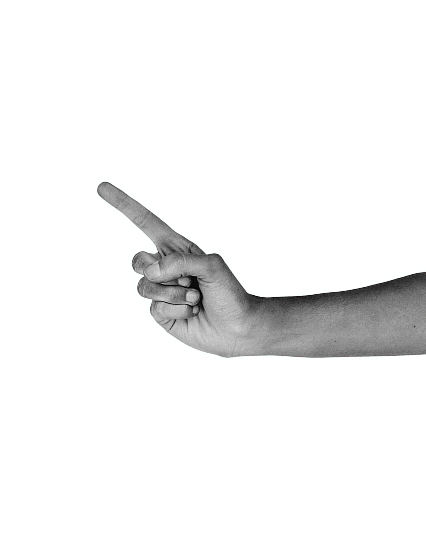
People are turning away from the news, and the COVID-19 pandemic made it worse. As a Brazilian journalist but also a citizen and news consumer, I remember being bombarded with stories of death, fear, loss, sadness, with no hope for a better present or future. Some of my folks took a break from media completely, unsubscribed from newsletters, and others reduced their time on social media for a while, me included. It was too much. My digital feed was overwhelmed with bad news, so was my mind, filled with anxiety and fear.
This news avoidance didn’t start with the pandemic, though. It is a global movement. Data from the Reuters Institute Digital News Report 2025 shows a ten-year trend toward disengagement from online news: 39% of people now say they often or sometimes actively avoid the news, up from 29% in 2017.
The stresses of everyday life are one of the main reasons people are avoiding the news, according to the report. Many, particularly Black people, women, and other marginalized communities just don’t have the time or energy to consume news because they are overworked, tired, and have more urgent things to attend to, like childcare and the family budget. This adds a gender and racial dimension to avoidance too.
Declining news completely is problematic. It can have negative implications for democratic participation and for combating misinformation. It affects people’s ability to discern critically what is true or not, among other things. Media can be a bridge to society, to access rights, information on climate disasters, health, community issues, yet many are turning away from it. There is a need to find better and healthier ways to consume media, rather than simply avoiding it.
Representation, framing and bias
Consuming stories of sadness, war, and crises affects mental health and our political imagination. Oppressive systems such as colonialism shape how coverage is angled. Who gets centered, and who gets criminalized?
Palestinian lives, for example, are not covered humanely or with proper context. According to FAIR, citing cable TV transcripts and death statistics, “around seven times as many Palestinians died as Israelis during October, [but] Palestinian victims appear to have received significantly less coverage on cable TV”. Media outlets often fail to report on Palestinian deaths with the same humanization or empathy shown toward Israeli casualties, and frequently rely on Israeli military sources as primary narratives.
Victims of gender violence are also revictimized and blamed in headlines. A study by the Global Media Monitoring Project (GMMP) found that only 31% of news stories on gender-based violence frame the issue in a way that challenges victim‑blaming or contextualizes the social causes of violence.
Stories on complex issues might not be revolutionary because they are made by humans, journalists and others, who carry their own prejudices and biases. But beyond individual bias, the structure of media ownership plays a critical role in shaping narratives. Many major media outlets are controlled by billionaires, corporations, or political elites whose interests often align with maintaining the status quo.
In Latin America, for example, Brazil’s Globo conglomerate has long shaped public opinion, often aligning with powerful political and economic interests. In Mexico, Televisa has historically supported ruling parties while marginalizing dissenting voices. In Argentina, Clarín Group dominates much of the media landscape, influencing political discourse with a clear ideological slant.
These dynamics mirror global trends, such as Jeff Bezos owning The Washington Post, Elon Musk controlling X (formerly Twitter), and big tech platforms like Google and Meta shaping what news reaches people. Ownership and corporate agendas influence which stories are prioritized, which voices are silenced, and how issues are framed, often leading to a lack of context, exclusion of marginalized perspectives, and even the distortion of interviews and facts.
News fatigue: stress, anxiety, and emotional burnout
Practicing media literacy requires effort: Who is telling this story? Who benefits? What’s missing? In this digital era, where AI and social media dominate, consuming news can take a lot of effort. Double-checking disinformation and misinformation adds stress and work. We can’t just trust news at face value; we often need to check sources ourselves.
This, combined with constant exposure to crisis coverage, makes the experience of consuming news even more difficult, exhausting, and sometimes traumatic. “Overexposure to negative or alarming content can affect our emotional and cognitive well-being,” explains Melissa Santamaría, psychologist with clinical experience and doctoral training.
She explains that multiple studies in health psychology and neuroscience have documented the effects of excessive consumption of negative news, especially stories related to violence, disasters, political conflicts, or economic crises. The main risks she outlines include:
According to Santamaría, constant news consumption, especially in hyperconnected environments, can be a double-edged sword: “Staying informed is key to active and critical citizenship, so it’s not about avoiding the news, but rather developing a more conscious and healthy relationship with it.” This includes finding alternative and independent news sources.
To consume news in a healthier way, healthier news needs to exist. María Gabriela Cisterna, a solutions journalist from Argentina focused on the environment and culture in Latin America, explains that news segmented audiences are also a challenge. Journalism usually targets the general public, but not always children or elderly for example.
“My grandmother is 89 years old and watches a lot of news. She already has some cognitive impairment due to age, and I see how much bad news affects her, kidnappings, disappearances, families who die, constant police stories. That affects her psychologically. She dreams about it, gets anxious, and sometimes confuses it with things happening in our family. I think it affects all of us.”
Solutions journalism offers an opportunity to see content from a perspective of hope, health, and action. It doesn’t avoid the issues we’re facing, it shows what society is doing to tackle them.
Cisterna says solutions journalism means giving continuity to stories: “A family loses everything, okay, but what do they do next? What strategies do they find? Humans have a capacity to adapt. That’s inspiring.”
She stresses that it’s not about showing heroes, but ordinary people in difficult situations doing what they can to solve problems: “People don’t only have pain or anger. How do they solve things? What do they do when illness or crisis comes?”
Not only are news consumers getting sick from constant crisis coverage, journalists are, too. In Peru, Ecuador, and Venezuela, between 43% and 64.5% of journalists report experiencing significant anxiety, insomnia, or somatic symptoms. It’s not just the viewers, those producing the news are also deeply affected.
Solutions journalism offers a healthier alternative not only for those who consume the news, but also for those who create it. That’s why Andrea Méndez Brandam created Noticias Positivas, a pioneering media project born in the aftermath of Argentina’s 2001 crisis. At the time, the journalist was expecting her fourth child, her first daughter, and felt a deep responsibility as a communicator. Already aware of the environmental crisis and gender violence, she asked herself what kind of journalism could truly contribute to change. “It is not just a media outlet, it’s a way to practice coherence between what one thinks, feels, and does”, she shares.
For Brandam, who now works with the concept of regenerative journalism, choosing what kind of information we consume is “as important, or more, than what we eat.” She reminds us that while tragedies do happen, we often overlook the many acts of care, community, and resilience happening at the same time. “Educating ourselves and children to make conscious choices about the news is part of building a healthier culture,” she says.
Psychologist Melissa Santamaría shares some strategies, backed by psychological evidence, that may help us regulate our news consumption more mindfully:
Checking the news once in the morning and once in the evening helps avoid compulsive scrolling. News just before bed can disrupt sleep and increase mental rumination.
Look for sources that prioritize truthfulness, in-depth analysis, and diverse perspectives. Avoid confirmation bias, try reading things you disagree with, too. Choose media with solutions-focused or “good news” sections to balance the negative.
If something triggers anxiety or intense sadness, pause. Let yourself feel it (the “90-second rule” helps). Use breathing, movement, or talk with someone you trust. Avoid reacting impulsively.
Ask yourself: Who is saying this? With what intention? Is this language manipulative? Stay curious, skeptical, and analytical. Keep learning, not preaching.
After reading hard news, ask: What small thing can I do? Support a cause, share verified info, donate, or just care for your community. Avoid fanaticism; stay balanced and grounded.
Not all content is rigorous or healthy. Mute alarmist accounts, unfollow overwhelming outlets, and set alerts for topics you actually care about. Curate your feed like you would your diet.
Newsrooms should uplift agency, not just agony. Many media and editors are already flipping the script and so should we.
Staying informed shouldn’t mean staying in despair. And tuning out isn’t the only way to stay well. News should move us to action, but also keep hope alive. We should also look for that.
It’s not about avoiding reality, but rather learning to relate to information in a conscious and healthy way. Learning to regulate the emotional impact of the news is, now more than ever, an essential tool for self-care and collective mental health.
Community.

